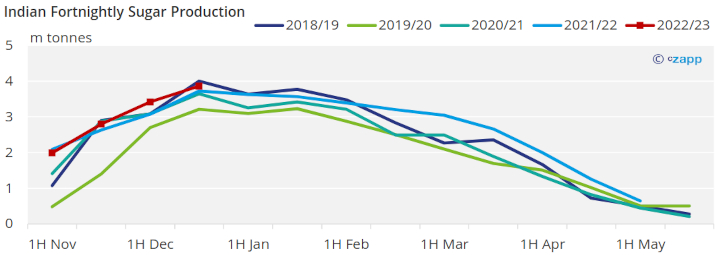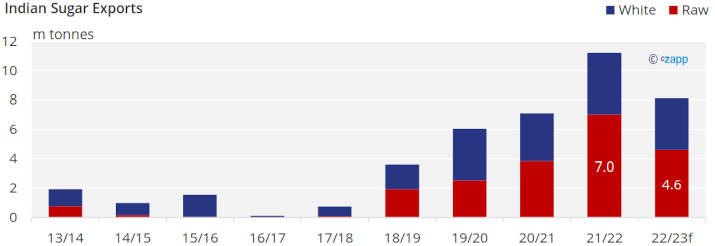Insight Focus
- India is on track to produce 35.5m tonnes of sugar this year.
- This would be the second-highest sugar output on record.
- India is one of the world’s largest sugar producers and exporters.
India is one of the top sugar producers in the world.
Last year, India produced around 36m tonnes of sugar and was the world’s largest sugar producer, ahead of Centre-South Brazil. India is also a major sugar exporter and so its crop prospects can be important for the sugar markets.
India is a northern hemisphere cane producer. Broadly speaking, cane harvesting begins in November each year and finishes in May, though regional differences exist.
This year we expect India to make 35.5m tonnes of sugar. Is the crop on track?

So far, Indian cane crushing has proceeded rapidly. This is reflected in high fortnightly sugar production, which has maintained above last year’s pace.

Cumulative sugar production to the end of December was over 12m tonnes, the first time this level has been achieved by the turn of the year.
We will now need this pace of cane harvesting and sugar production to be sustained through January and February to be confident in our Indian crop projections.
The government will also be watching. They have approved only 6m tonnes of sugar exports so far this season, far below what was shipped in 2021/22. Once they have confirmation that this year’s crop is performing in line with expectations they may choose to award a further tranche of exports. This may happen towards the end of Q1’23.
We expect India to export 8m tonnes of sugar this year, assuming the crop stays on track.

If you’d like us to answer one of your questions, please get in touch: Will@czapp.com.







